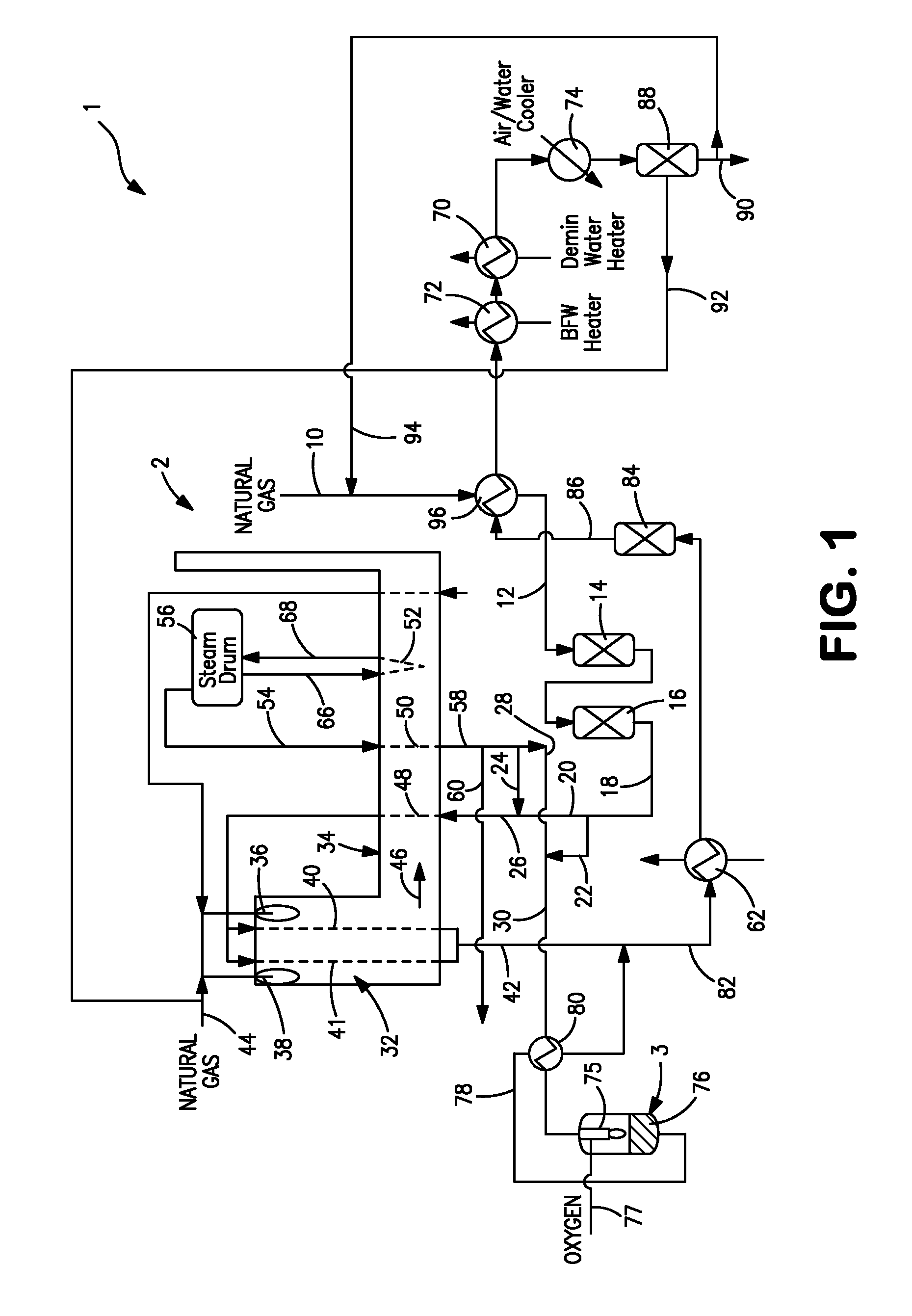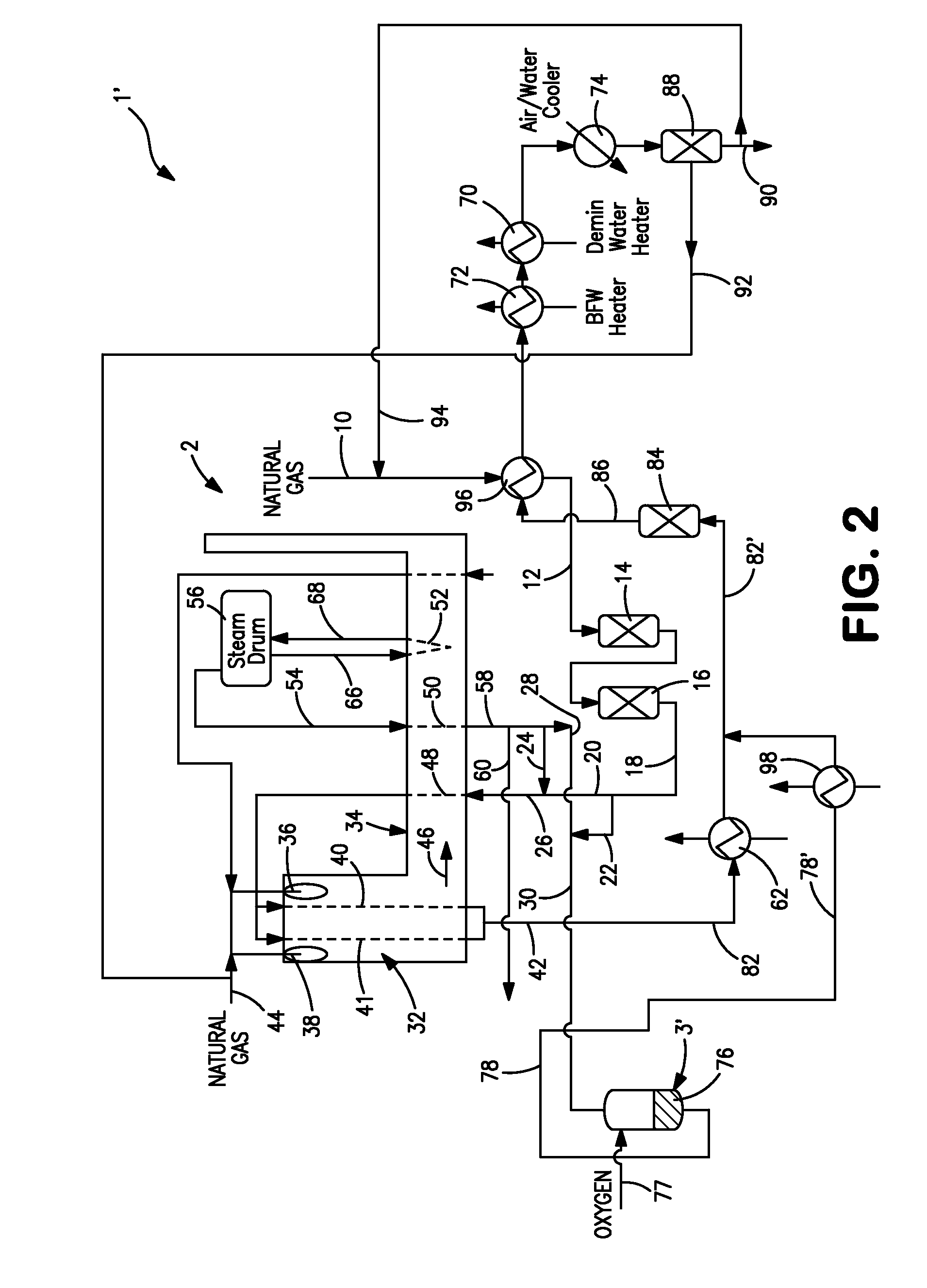Hydrogen product method and apparatus
a technology of hydrogen products and methods, applied in the direction of liquid-gas reaction processes, chemistry apparatus and processes, hydrogen separation using solid contact, etc., can solve the problems of high oxygen consumption required for such conversion, and unacceptably high production costs, so as to increase the production rate and increase the hydrogen containing product
- Summary
- Abstract
- Description
- Claims
- Application Information
AI Technical Summary
Benefits of technology
Problems solved by technology
Method used
Image
Examples
Embodiment Construction
[0025]With reference to FIG. 1, a hydrogen plant 1 in accordance with the present invention is illustrated. Hydrogen plant 1 has a steam methane reformer 2 incorporating a steam generation system and a catalytic reactor 3 that has been retrofitted to the hydrogen plant 1 in order to increase its output of hydrogen. Hydrogen plant 1 is designed to reform a natural gas stream 10. However, this is simply for purposes of illustration in that hydrogen plant 1 could be designed to process any other type of hydrocarbon containing stream such as naphtha or other type of feed containing hydrocarbons. Furthermore, although the present invention is illustrated in connection with a hydrogen plant having a pressure swing adsorption unit 88 to be discussed, the present invention has broader application. For example, a shifted stream 86, also to be discussed, could be used in other types of unit operation or production apparatus such as an amine unit to remove carbon dioxide and then form a hydrog...
PUM
| Property | Measurement | Unit |
|---|---|---|
| temperature | aaaaa | aaaaa |
| temperatures | aaaaa | aaaaa |
| temperatures | aaaaa | aaaaa |
Abstract
Description
Claims
Application Information
 Login to View More
Login to View More - R&D
- Intellectual Property
- Life Sciences
- Materials
- Tech Scout
- Unparalleled Data Quality
- Higher Quality Content
- 60% Fewer Hallucinations
Browse by: Latest US Patents, China's latest patents, Technical Efficacy Thesaurus, Application Domain, Technology Topic, Popular Technical Reports.
© 2025 PatSnap. All rights reserved.Legal|Privacy policy|Modern Slavery Act Transparency Statement|Sitemap|About US| Contact US: help@patsnap.com


